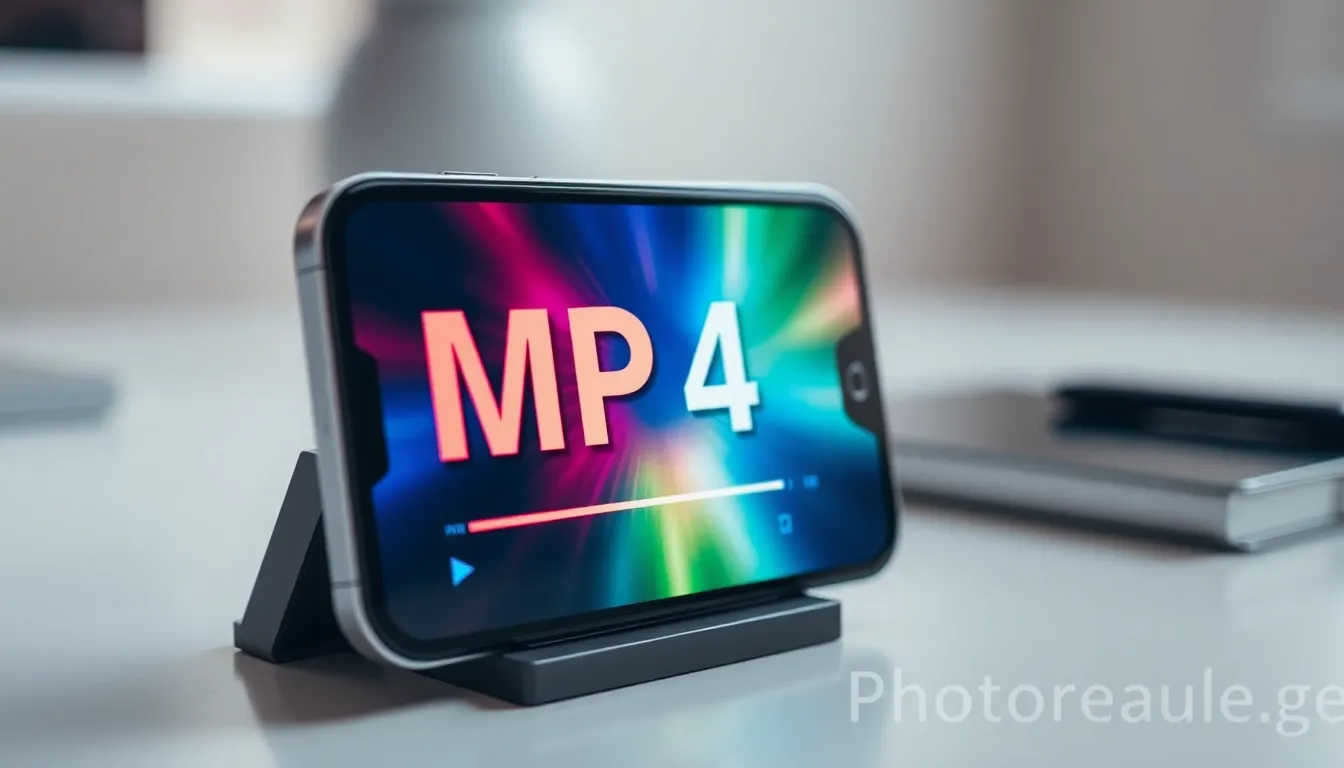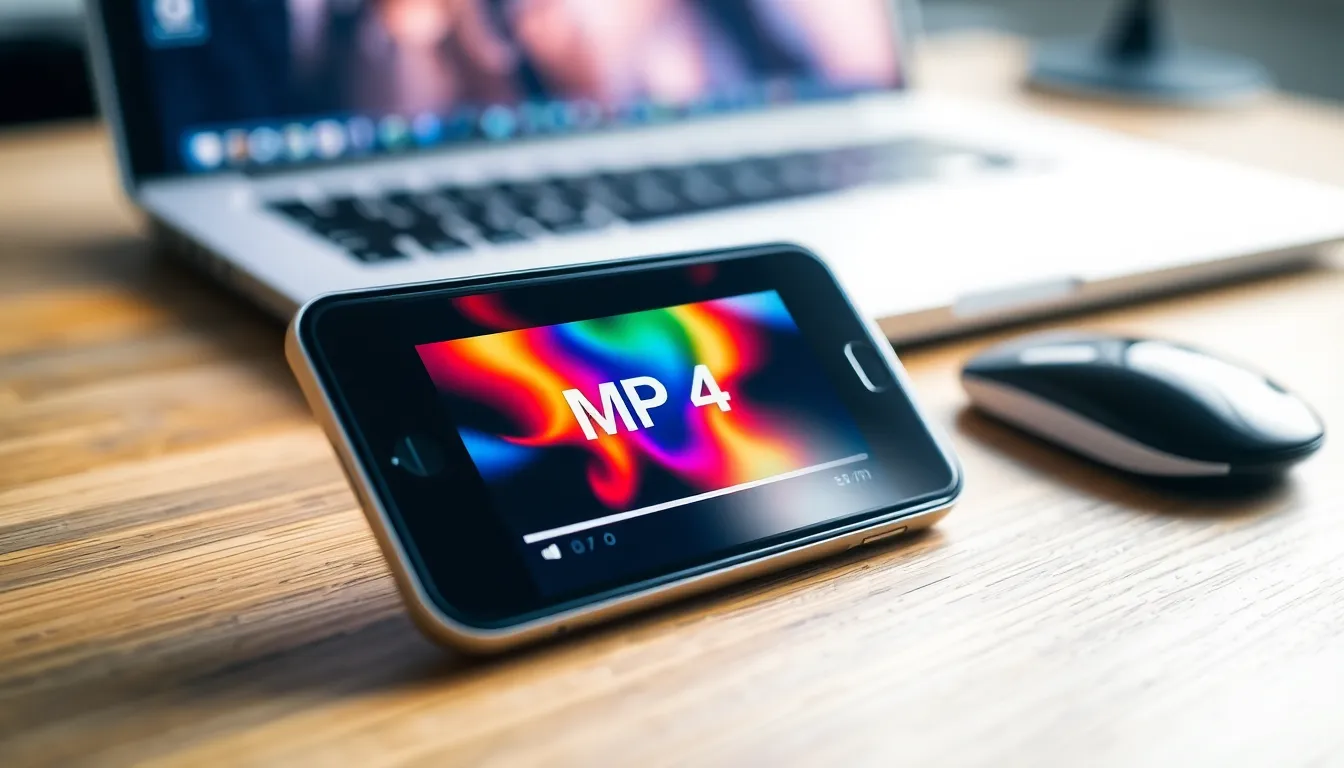Picture this: you’re lounging on your couch, ready to binge-watch the latest blockbuster on your iPhone, but wait—your favorite MP4 video is stuck on your computer. Panic sets in. Can you save MP4 to iPhone? The good news is yes, you can!
Table of Contents
ToggleUnderstanding MP4 Format
MP4, known as MPEG-4 Part 14, stands as a popular digital multimedia format. This format supports video, audio, subtitles, and images, making it versatile for multimedia applications. It’s widely used for streaming online content and for storage on devices. High compatibility exists between MP4 files and various platforms, including iOS devices.
Quality plays a significant role in MP4’s appeal. It can compress large video files into smaller sizes without considerable loss in quality. Many users prefer this format for its efficient storage capabilities. Options for resolution and bitrate adjustment offer flexibility in final output, catering to different preferences.
Devices like iPhones natively support MP4 files, which simplifies playback. When users transfer MP4 videos, they encounter fewer compatibility issues on their devices. Software solutions exist to help facilitate seamless transfer, ensuring users maintain their video files across platforms.
Understanding specific codecs also enhances MP4’s usability. H.264 codec serves as a common option within MP4, ensuring quality remains high while files stay light. Users looking to convert videos into MP4 can find numerous tools online tailored for this purpose.
MP4 emerges as a user-friendly format. Its balance of quality and file size makes it ideal for iPhones. With straightforward methods of transfer available, users enjoy watching their favorite videos anytime.
Supported Video Formats on iPhone

iPhones support several video formats, ensuring a versatile media experience. Compatibility varies among formats, impacting usability and playback.
Differences Between MP4 and Other Formats
MP4 offers unique advantages over formats like AVI and MKV. While AVI files can be larger, MP4 maintains quality with smaller sizes. Compatibility also varies; MP4 works seamlessly on iPhones, whereas MKV might require additional software.
WMV files might not play directly on iPhones, complicating access. In contrast, MP4’s widespread acceptance across devices and platforms simplifies video sharing. Quality preservation in MP4 remains a key benefit, promoting efficient storage. Other formats may introduce issues like codec incompatibility, making MP4 a convenient choice for iPhone users.
Methods to Save MP4 to iPhone
Several methods exist for transferring MP4 files to an iPhone, ensuring users can enjoy their videos effortlessly.
Using iTunes
iTunes provides a straightforward way to transfer MP4 files. Users connect their iPhone to a computer using a USB cable. After opening iTunes, they select the device icon. Next, they navigate to the “Movies” tab, checking the box for “Sync Movies” before selecting the desired MP4 files. Finally, clicking the “Sync” button transfers the videos directly to the iPhone’s library.
Using iCloud Drive
iCloud Drive offers a cloud-based solution for MP4 file transfer. Users upload their MP4 files to iCloud Drive from a computer. Once uploaded, they access iCloud Drive on their iPhone using the Files app. Tapping on the uploaded video allows playback or saves it directly to the device. This method works well for users wanting to access videos across multiple devices.
Using Third-Party Apps
Third-party apps provide additional flexibility for transferring MP4 files. Users can explore apps like VLC or Documents by Readdle. After downloading an app, they typically use Wi-Fi transfer or connect via USB. Following the app’s specific instructions allows seamless import of MP4 files into the app’s library. These apps often offer enhanced playback features, making them ideal for video enthusiasts.
Troubleshooting Common Issues
Transferring MP4 files to an iPhone may present some challenges. Users often face issues with file formats. When using iTunes, ensure the software is up to date to avoid compatibility problems. Failing to update may lead to errors during syncing.
Incompatible codecs can cause playback failures. The H.264 codec typically maintains quality for MP4 files. Verify that the video files utilize compatible codecs for uninterrupted viewing. If a file doesn’t play, consider converting it using a reliable video converter.
Storage space can also limit the transfer process. Check the available space on the iPhone before attempting to sync large files. Deleting unnecessary apps or videos can free up sufficient storage.
Wi-Fi issues may complicate cloud-based transfers. iCloud Drive requires a stable internet connection for uploads and access. If slow connectivity occurs, consider switching to a stronger Wi-Fi network or retrying at a different time.
Third-party apps can also create hurdles during transfers. Ensure the apps used, like VLC or Documents by Readdle, are updated to their latest versions. Bugs in outdated versions may hinder their functionality.
If problems persist, restarting both devices might provide a solution. A simple reset can clear temporary glitches that might interfere with file transfers. Keeping devices updated and troubleshooting common issues ensures a smooth viewing experience.
Transferring MP4 files to an iPhone is a straightforward process that opens up a world of entertainment possibilities. With its high compatibility and user-friendly nature, MP4 stands out as the ideal format for mobile viewing. Whether using iTunes, iCloud Drive, or third-party apps, users can easily enjoy their favorite videos on the go.
By understanding the methods available and keeping an eye on potential issues, like codec compatibility and storage space, users can ensure a seamless experience. With the right approach, accessing and enjoying MP4 content on an iPhone becomes a hassle-free endeavor, allowing users to make the most of their multimedia library.




